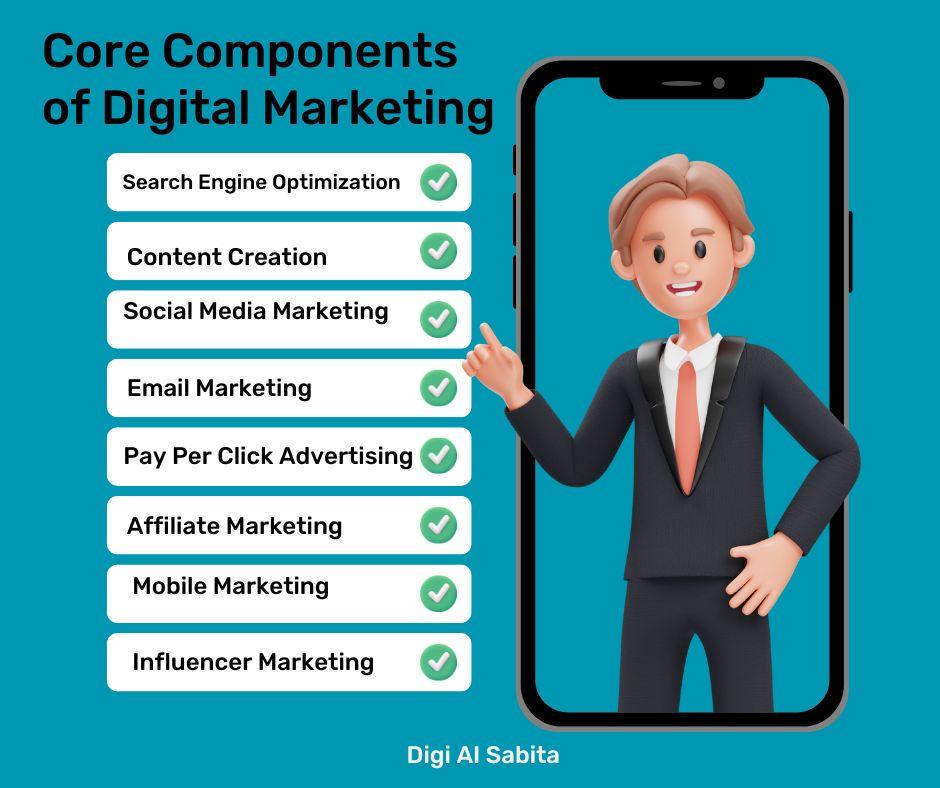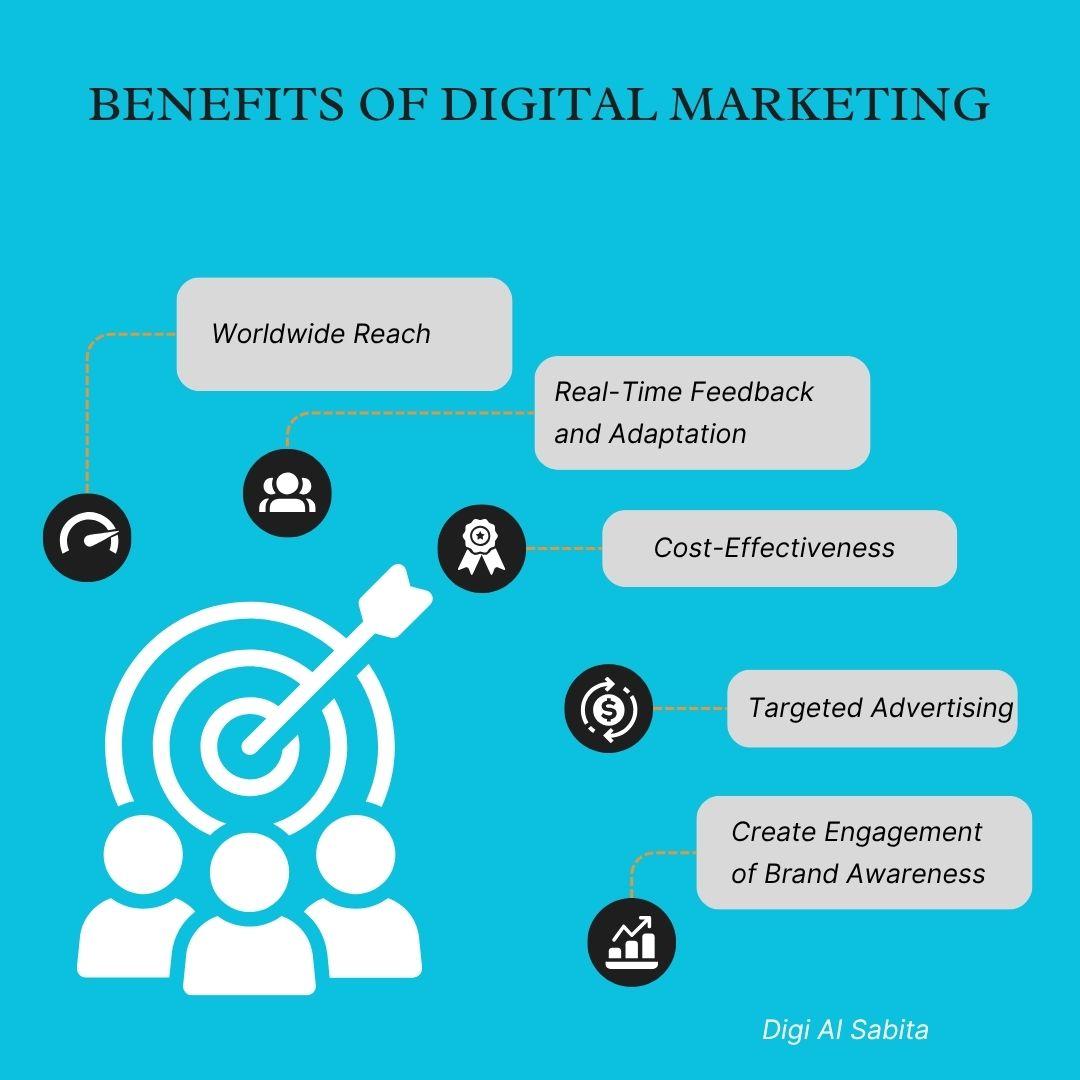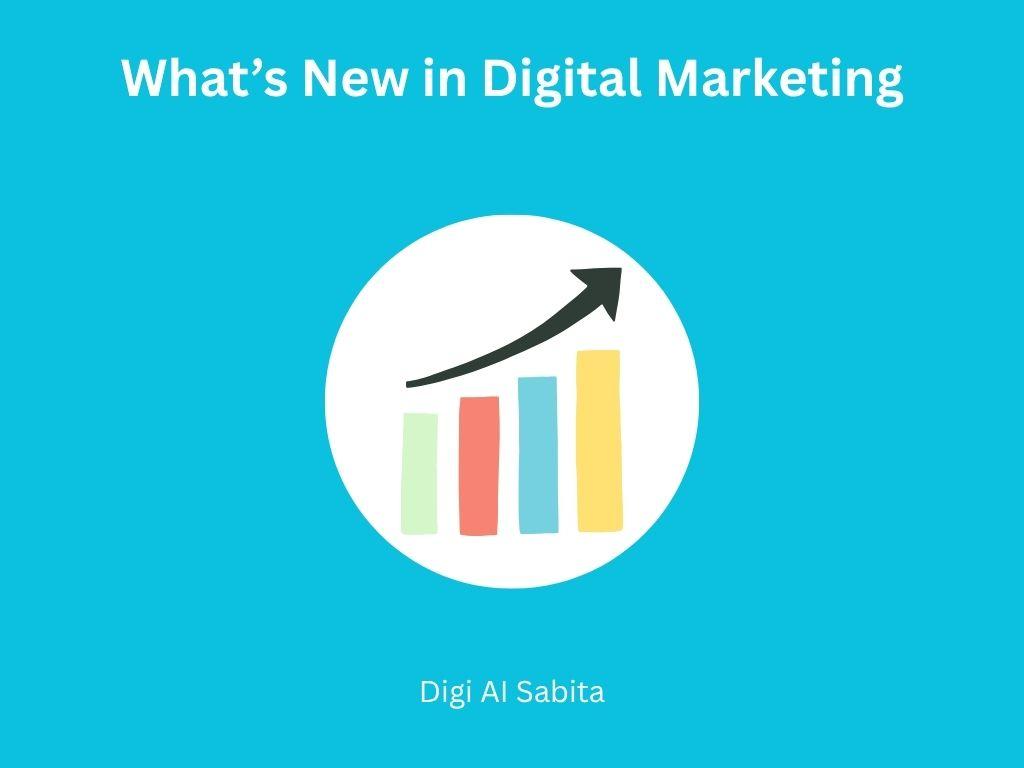Introduction: Digital Marketing in 2025
Digital marketing is undergoing a significant transformation in 2025. It is a powerful and vast practice that utilizes digital channels and technologies for promoting products, services, and brands. Lots of people can get benefits from digital marketing with new technology and inventions in 2025. It involves strategies and tools to reach and engage target audiences in the digital world.
Meaning of Digital Marketing
Digital marketing is the component of utilizing digital channels, platforms, and technologies to sell and promote products or services. All these forms involve search engine optimization (SEO), pay-per-click (PPC), content creation, social media marketing, and email marketing, among others. Their main motives are to reach online consumers or clients and generate brand recognition, create traffic, and ultimately, make more sales and attract loyal customers.
Evolution of Digital Marketing
The term ‘Digital Marketing’ started in the 1990s. As we can see, the history of digital marketing has had a direct connection to technological inventions and shifts in consumer behavior.
At its beginning stages, digital marketing consisted of simple websites and email marketing. As the web became more popular, search engines such as Google gained traction, giving rise to SEO and PPC advertising. Today, digital marketing needs a data-oriented discipline that leverages advanced analysis, artificial intelligence, and automation to provide customized and impactful marketing campaigns.
Core Components of Digital Marketing

a. (SEO) Search Engine Optimization: SEO entails making website content and its architecture optimal for better visibility on search engine result pages (SERPs). The aim is to draw organic (free) traffic through optimal placement of the website for targeted keywords and phrases. Key SEO techniques include keyword research, on-page optimization, link building, and technical SEO.
b. Content Creation: Content marketing involves the creation and distribution of valuable, relevant, and consistent content to attract and retain a defined audience. The key is to deliver information that resonates with the needs and interests of the target audience.
c. Social Media Marketing: Social media marketing is the process of promoting products or services using social media platforms such as Facebook, Instagram, Twitter, LinkedIn, and more. It allows brands to interact with their audience, publish content, place ads, and create a community for their brand.
d. Email Marketing: Email marketing is a form of direct marketing where emails are sent to prospects and customers. Successful email marketing campaigns are able to convert prospects into customers and one-time buyers into loyal enthusiasts. It comprises newsletters, promotional campaigns, and bespoke messages based on the interest and behavior of the recipient.
e. Pay Per Click (PPC) Advertising: PPC advertising is a system under which advertisers pay for every time an advertiser’s advertisement is clicked. Google Ads is a leading PPC platform with which companies can show ads in Google’s search engine results and its ad network.
f. Affiliate Marketing: Affiliate marketing is the process of collaborating with individuals or organizations (affiliates) who market your goods or services in return for a payment based on sales made through their actions. It’s a pay-for-performance approach based on using the reach and influence of the affiliates to push brand visibility and sales.
g. Influencer Marketing: Influencer marketing leverages individuals with a significant following on social media or other platforms to promote products or services.
h. Mobile Marketing: Mobile marketing reaches users on their mobile devices and tablets via platforms such as SMS, MMS, mobile applications, and mobile websites. Due to the growth of mobile devices, this kind of marketing is necessary in order to reach consumers who are on the move.
Benefits of Digital Marketing

a. Worldwide Reach
Digital marketing enables companies to have a global following without the geographical constraints of conventional methods of marketing. This wider coverage could result in greater brand exposure and sales potential.
b. Cost-Effectiveness
It is usually more cost-saving compared to conventional marketing. It enables companies to budget and obtain better returns on investment with targeted campaigns.
c. Real-Time Feedback and Adaptation
It also offers a treasure trove of data and analytics, which allow businesses to figure out the performance of their campaigns in real time. Data points like website traffic, conversion rates, and levels of engagement allow marketers to make rational decisions and fix their strategies.
d. Targeted Advertising
Digital marketing, on the other hand, allows companies to target certain demographics, interests, and behaviors. This targeting makes it more easy that the prospects will be converted into customers.
e. Create Engagement of Brand Awareness
It introduces two-way communication between consumers and brands, which encourages interaction and relationship building. Give and take content, social media engagement, and personalized messaging make the customer experience more engaging.
Challenges of Digital Marketing
a. Fast Technological Changes: The digital environment keeps changing with new platforms and technology emerging daily. Marketers have to keep up with these trends if they are to remain competitive and reach their target markets effectively.
b. Data Privacy Issues: Since digital marketing is data collection and analysis-based. Issues of data security and privacy are now more important than ever. Marketers find their way around laws such as the General Data Protection Regulation (GDPR) while promoting-data behaviors.
c. High Competition: The ubiquity of digital marketing means that numerous businesses are competing for the attention of the same audience. To be heard through the noise in a highly competitive digital environment takes creativity, planning, and ongoing optimisation.
d. Content Saturation: With the sheer volume of content online, grabbing and keeping the audience’s attention is becoming more difficult. High-quality, relevant, and interesting content has to be created to be heard through the noise by marketers.
Trends and future in Digital Marketing
a. Artificial Intelligence (AI) and Machine Learning: Artificial Intelligence (AI) and machine learning are transforming digital marketing as they empower predictive analytics, customized content, and automated customer engagements.
b. Voice Search Optimization: It provides clear and concise answers to common questions, as voice-activated devices have become more popular, optimizing for voice search is becoming a powerful task. It focuses on natural language questions and presenting short, informative responses.
c. Video Marketing: Video content remains increasingly popular, with sites such as YouTube, TikTok, and Instagram reels providing vehicles for brands to connect with their publics through storytelling and visual content.
d. Interactive Content: It encourages users to spend more time with the content, such as quizzes, polls, etc. It also increases user interactions and provides valuable insights into customers’ behavior.
e. Sustainable and Ethical Marketing: It focuses on promoting products and services in a manner that supports long-term ecological balance and societal well-being. Customers are placing more important on sustainability and responsible practices.
Final Conclusion
In conclusion, digital marketing offers a complete suite of benefits that empower businesses to connect with their audience more effectively, efficiently, and personally. By embracing digital strategies, companies can drive growth, enhance customer experiences, and achieve long-term success in today’s digital-first world.
Call-to-Action
If You are Ready to Grow Your Brand Online?
Then don’t just keep up, go ahead! Implement a smart digital marketing strategy today and watch your business thrive in 2025.
Need any help building your strategy? Mail us for a free consultation to get started!
FAQs:
Why is Digital Marketing important?
It is important because it allows business to connect with a broad audience. It targets specific geographics and measures campaign performance in real-time to achieve results compared to traditional methods.
What is the difference between SEO and SEM?
The difference between SEO and SEM is that SEO is search engine optimization. It mainly focuses on optimizing website content to rank organically in search engine results, whereas SEM is search engine marketing. It involves paid advertising to appear in search engine results such as Google Ads.
What is playbook marking?
Playbook marketing is complete guidance that outlines a company’s marketing strategies, techniques, and best practices. It serves as a reference to certify consistency and alignment across all marketing efforts.
Is Digital Marketing legit?
Yes, it is legit to promote your products and services inside and outside the country.
